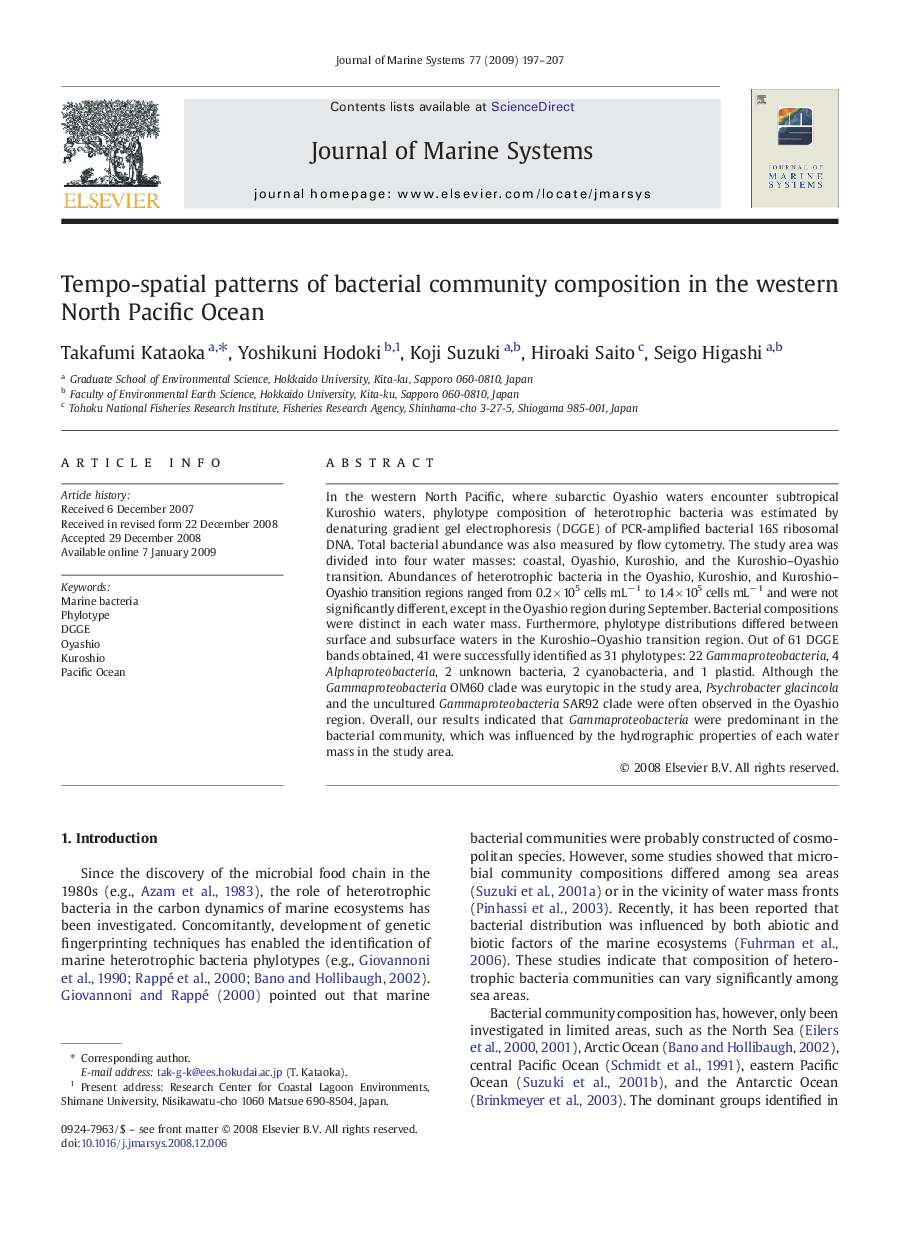| Article ID | Journal | Published Year | Pages | File Type |
|---|---|---|---|---|
| 4549051 | Journal of Marine Systems | 2009 | 11 Pages |
Abstract
In the western North Pacific, where subarctic Oyashio waters encounter subtropical Kuroshio waters, phylotype composition of heterotrophic bacteria was estimated by denaturing gradient gel electrophoresis (DGGE) of PCR-amplified bacterial 16S ribosomal DNA. Total bacterial abundance was also measured by flow cytometry. The study area was divided into four water masses: coastal, Oyashio, Kuroshio, and the Kuroshio-Oyashio transition. Abundances of heterotrophic bacteria in the Oyashio, Kuroshio, and Kuroshio-Oyashio transition regions ranged from 0.2 Ã 105 cells mLâ 1 to 1.4 Ã 105 cells mLâ 1 and were not significantly different, except in the Oyashio region during September. Bacterial compositions were distinct in each water mass. Furthermore, phylotype distributions differed between surface and subsurface waters in the Kuroshio-Oyashio transition region. Out of 61 DGGE bands obtained, 41 were successfully identified as 31 phylotypes: 22 Gammaproteobacteria, 4 Alphaproteobacteria, 2 unknown bacteria, 2 cyanobacteria, and 1 plastid. Although the Gammaproteobacteria OM60 clade was eurytopic in the study area, Psychrobacter glacincola and the uncultured Gammaproteobacteria SAR92 clade were often observed in the Oyashio region. Overall, our results indicated that Gammaproteobacteria were predominant in the bacterial community, which was influenced by the hydrographic properties of each water mass in the study area.
Related Topics
Physical Sciences and Engineering
Earth and Planetary Sciences
Oceanography
Authors
Takafumi Kataoka, Yoshikuni Hodoki, Koji Suzuki, Hiroaki Saito, Seigo Higashi,
